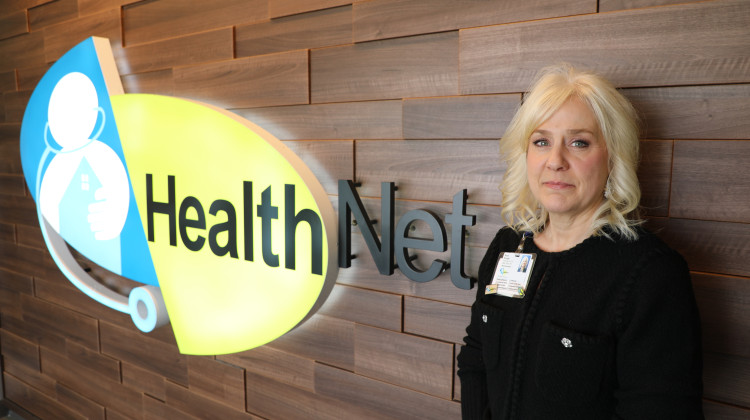
Ryan White poses with his mother Jeanne Ginder-White. The photo is one of many in Nelson Price's book on White's life released this week "The Quiet Hero."
Gretchen FrazeeToday marks the 25th anniversary of Ryan White’s death.
After contracting HIV five years earlier via a blood transfusion, the 18-year-old died April 8, 1990, in Indianapolis. By that time he had become an international symbol for HIV awareness.
“That calming voice coming from a child, when you think back on it, was so amazing,” says Tom Bartenbach, the executive director of the Damien Center, an Indianapolis-based nonprofit that provides HIV services. “Just the fact that he was able to grasp the magnitude of what he was doing still lingers on today.”
At the time, HIV was still a relatively new disease to most people. Those who contracted it were stigmatized, in part because of its association with gay men.
But Ryan White’s story inspired many, forcing people not only in his home town of Kokomo, but across the nation, to confront their fears and misconceptions about HIV.
“Because of the lack of education on AIDS, discrimination, fear, panic, and lies surrounded me,” White told the president’s commission on AIDS when he was 16 years old, recounting how he was made fun of at school and even banned from going to school altogether for fear he might spread the disease.
“It was difficult, at times, to handle, but I tried to ignore the injustice, because I knew the people were wrong,” he said. “My family and I held no hatred for those people because we realized they were victims of their own ignorance.”
White’s story made a difference.
Just a few months after his death, Congress enacted the Ryan White CARE Act, which gives assistance to cities, states and advocacy organizations to provide services to people with HIV.
The Damien Center still benefits from that legislation.
“Back when Ryan was living and for the next decade, at the Damien Center we were literally helping people and families with death,” Bartenbach says. “Today, our mission is to help people and families with living.”
But Bartenbach and health officials warn the threat of HIV is still very real today.
While it might not be getting as much attention or be sparking protests like AIDS did in the 1980s, the recent HIV epidemic in Southeastern Indiana serves as a reminder that the disease has not gone away.
“The baseline knowledge about HIV has improved. However, I’m concerned that with the advances in medicine, people might not be as concerned about [contracting HIV] as they were at one point in time,” says the Damien Center’s Director of Supportive Services Jeremy Turner, who has been working with HIV patients for 10 years.
Turner points out that while there are medications to treat HIV there is no cure and younger generations who were not alive during the AIDS crisis might not understand the seriousness of the disease.
He says education is still the key, especially among poorer populations that have limited access to healthcare.
 DONATE
DONATE







 View More Articles
View More Articles



 Support WFYI. We can't do it without you.
Support WFYI. We can't do it without you.